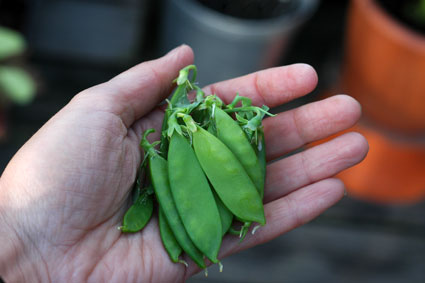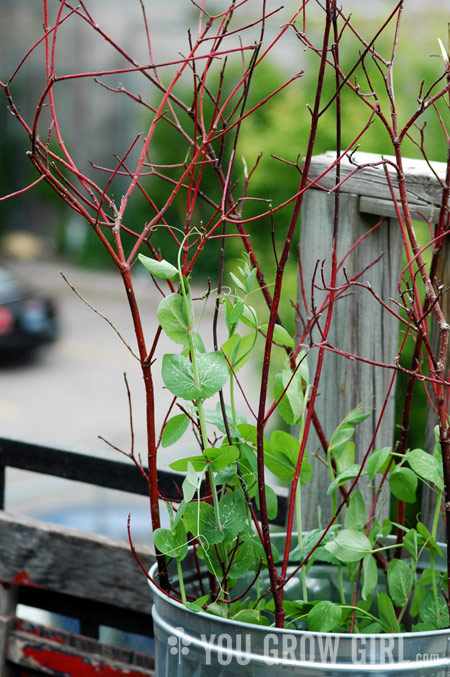
Guest post by Arzeena Hamir
No matter what zone you live in, garden peas are one of the first crops that can be planted outdoors. Even though the weather may be mild at this time of the year in your zone, the soil is still quite cold which often results in poor germination. In addition, peas started in very cold soil are more susceptible to root rot and other soil-borne diseases. However, with a little planning and a few shortcuts, even gardeners who have to wait for a thaw to plant can get a jump on their pea harvest.
The hardest decision to make is choosing a variety. If you prefer shelling peas, I would recommend Maestro, Green Arrow, or Knight. These varieties are relatively early and give good yields. If you have a cooler season & are willing to wait for your peas, Alderman (Tall Telephone) is amazingly sweet. For snap peas, Sugar Snap is an old-time favourite with excellent taste. However, the vines are often 6ft tall. For a shorter earlier-maturing variety, try Sugar Mel or Sugar Ann. Finally, for snow peas, I love Oregon Sugar Pod II as well as Oregon Giant. Even if some of these pods get lost in the foliage and end up forming peas, I’ve found them to be quite sweet.
Although peas can survive weather down to 40º F, the seeds still require warmth to germinate. Cold, damp soil will retard germination, making the seeds susceptible to fungus & insect damage. An easy trick is to start the germination indoors. Pea seeds are easily sprouted between damp paper towel and once the root appears from the seed, it can be planted outside with a higher chance of survival. In colder areas where the ground is still thawing, the seeds can be grown as transplants for a couple of weeks longer.

Some sort of trellis will be required and should be erected before the plants emerge. Most peas grow to a height of 3 ft although many of the heirloom varieties can reach 6ft or more. Pea netting or even fish netting is ideal to allow the tendrils to form a good grip. If trellising just isn’t in the picture for your garden, I would recommend growing a semi-leafless pea variety like Novella II. The plants produce an abundance of tendrils and can support themselves if planted about 1 inch apart.
Ultimately, temperatures will rise and will support growth outside. Whether you’re direct seeding or transplanting, peas grown in early spring will benefit from the addition of inoculant. Peas, like other members of the legume family, have the ability to supply their own nitrogen from the atmosphere through a relationship they have with Rhizobia bacteria.
Although rhizobia are naturally occurring, in cold soil, they are not very active. Inoculant contains millions of these rhizobia bacteria and often comes in the form of a powder. Gardeners can either coat the seeds directly (like “Shake & Bake”) or mix inoculant into the soil where the transplants will grow. Either way, you will see a benefit. In trials, inoculated pea plants yielded 77% more peas than uninoculated plants. One word of caution, once the inoculant is moistened, use it all & do not let it dry out or you will kill the rhizobia.
Since peas can fix their own nitrogen, they require less nitrogen in their fertilizer. A fertilizer too rich in N (the first number) will promote leafy growth and delay flower & pod production. Before planting, compost or aged manure can be dug in. Peas also respond well to the addition of phosphorus (the middle number) so digging in bonemeal or rock phosphate will help with pea production.
Pre-sprouting, inoculating and extra phosphorus will all help your peas to get a jump on the weather and produce a bounty of harvest.
Arzeena Hamir is an agronomist and garden writer based in Vancouver, BC. She has worked in the organic gardening industry for 8 years as a consultant and trainer. When she’s not planting peas or harvesting zucchini, she runs Terra Viva Organics.